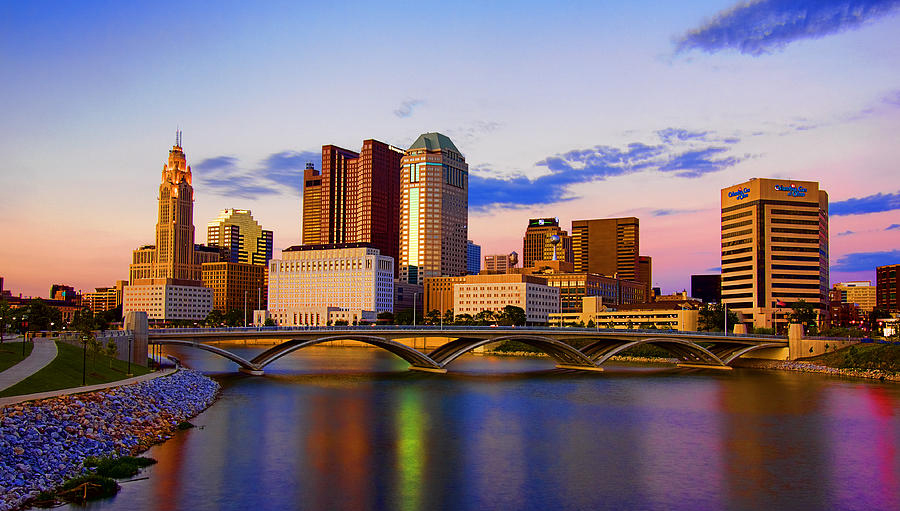Indianapolis is in the middle of an exciting, transformative era. New industries, like the fashion industry, have the potential to explode right here in our great city. To better nurture the developing local fashion industry, Pattern examines how and why other cities similar to Indianapolis became fashion hubs.
Young Professionals, or YPs, in the creative class are quickly becoming the tastemakers of American culture and a growing example of economic success. These young people are new to the professional scene but they are here to stay. But where exactly are they staying? These business and tech-minded individuals are fleeing their small hometowns for the hip vibes of larger cities with a lot of opportunities. These opportunities can range from jobs that align with their degree to being around a like-minded yet diverse group of people. From the unique and fun areas like Mass Ave. and Broad Ripple to the developing tech centers like 16 West, Indianapolis is the perfect place for these young entrepreneurs to relocate.
Columbus, Ohio
Columbus population: 822,553 (2013) // Indianapolis population: 852,866 (2013)
Columbus, as unlikely as it sounds, attracts a good number of Young Professionals by being a fashion hub. Easton Town Center, Short North and High Street stores as well as the national headquarters for The Limited, Express, Abercrombie & Fitch and Victoria’s Secret help bring in talent from around the globe as well as retain recent graduates of the local fashion programs. Not only do these fashion-conscious individuals have lots of shopping options, but those working in the industry have multiple and varied job opportunities available to them.
Since 1977, The Limited grew exponentially while its headquarters still remained in the Midwest. But why? For starters, the average “asking rent” for a class A office in Columbus is just $19.50 per sq. ft. An absolute bargain compared to the asking price of $77.66 per sq. ft for a downtown Manhattan class A office. However, Columbus’ price is still not as cheap as Indianapolis’ average of $18.90 per sq. ft.
Columbus also hopes to do more with less. City officials recognize that people are no longer shopping at large shopping centers like they did during the past 30 years. People still shop at physical retail spaces, but are now shopping online at a higher rate or visiting open-space shopping experiences within lifestyle centers. While human-interaction is still an important part of the retail experience, new retail development is now being placed in smaller stores within larger mix-used spaces. This makes the Midwest’s low rent a great way to achieve maximum return on investment. Even more so when considering the tax revenue to acre ratio.
The city’s geological location plays another major factor in developing a strong fashion industry because Columbus, just like Indianapolis, is centrally located in the nation and many major metropolitan areas are less than a 10 hour drive away. This ensures that the central headquarters of a company is truly at the center for the numerous national brand locations. Columbus is planning to capitalize on their central location by becoming a logistical hub for retail inventory delivery as well. Many retailers could guarantee next-day delivery when shipping from Columbus because it is a day’s drive from 44% of North America’s total population; plus, these retailers, more often than not, have a really efficient shipping software.
Plus, these retail giants are constantly encouraged to stay in Ohio and grow economically with the Job Creation Tax Credit. This is a refundable tax credit to companies creating at least 25 full-time jobs within three years in the state of Ohio. After all, these new full-time jobs are considered low-cost. Columbus is constantly listed with Indianapolis as an area with low workforce costs for both management and office support. Columbus is also known for being small-business friendly and is constantly ranked as a top 10 city for small businesses.
These economic factors are causing a population boom within the city of Columbus. Franklin County, the county that Columbus is located in, saw a dramatic population increase starting in the 2000s. By 2013, the metropolitan area ranked as the 13th fastest growing city in the United States. The Urban Land Institute of Columbus is currently in the planning stages of a massive, long-term “blueprint” for sustaining and growing Columbus’ rapidly growing population.
City planners expect about 604,000 additional people to relocate to the Columbus-area by the year 2050. Promoting job growth and training skilled workers are some of the top priorities for city officials to ensure major population as well as economic growth for Columbus. The 2050 Columbus Blueprint recognizes the importance of retail and is specifically planning for the “evolving retail marketplace” with special attention given to developing retail in mixed-use places, business incubation partnerships, and the creation of a retail logistical hub in the area.
Columbus had the opportunities readily available for young fashion designers to thrive and these designers chose to stay in the Midwestern city. An estimated 60 to 70 percent of Columbus College of Art and Design fashion graduates remain in Columbus. Fashion designers live in Columbus, work in Columbus, and bring a creative, fun factor to the Columbus community that inspires others. More importantly, the city and people of Columbus recognize design as a legitimate source of economic development.
There is an apparent need for plentiful opportunities and professional training provided and readily available for these young professionals. The tech industry in Indianapolis is thriving and already bringing in bright new minds, why not create another equally creative and thriving industry? Possibly a partnership with the fashion industry and the tech industry will help with retention and the attraction of young professionals to our city. Wearable tech (outfits that respond to the surrounding environment for example) is taking off in cities like Austin and San Francisco. Or Indianapolis could benefit by simply following the examples of our neighbors to the east when it comes to cultivating a burgeoning new industry. Bringing in major retailers to Indianapolis who want to collaborate with talented local designers may seem lofty at first, but it is certainly an obtainable goal. It’s time that Indy takes a leap of faith into the right direction, towards an exciting new fashion industry right here in our city!
Sources:
http://www.usatoday.com/story/travel/destinations/2013/07/11/columbus-ohio-shopping-boutiques-stores/2508723/
http://www.experiencecolumbus.com/blog/index.php/2013/10/09/why-columbus-is-a-fashion-capital/
http://www.capital-style.com/content/roundup-story/2013/03/secret.html?page=all
http://columbusregion.com/Sectors-Industries/Headquarters-Business-Services.aspx
http://www.governing.com/blogs/by-the-numbers/small-business-friendly-states-cities-rankings.html
http://www.dispatch.com/content/stories/local/2014/05/22/columbus-population-keeps-rising.html
Click to access ULI_Columbus2050.pdf
http://www.kvue.com/story/news/local/community/2015/11/09/wearables-among-ideas-grow-austin-fashion-industry/75489654/




